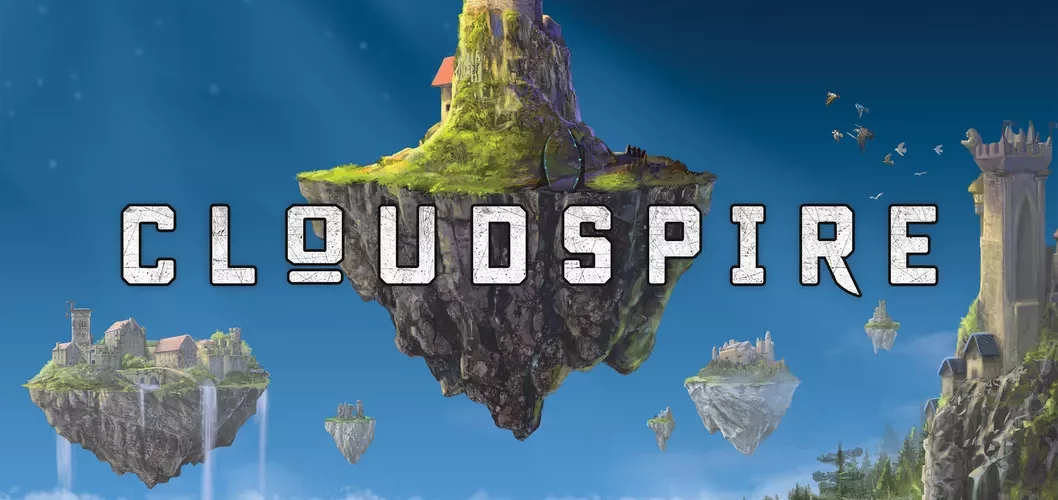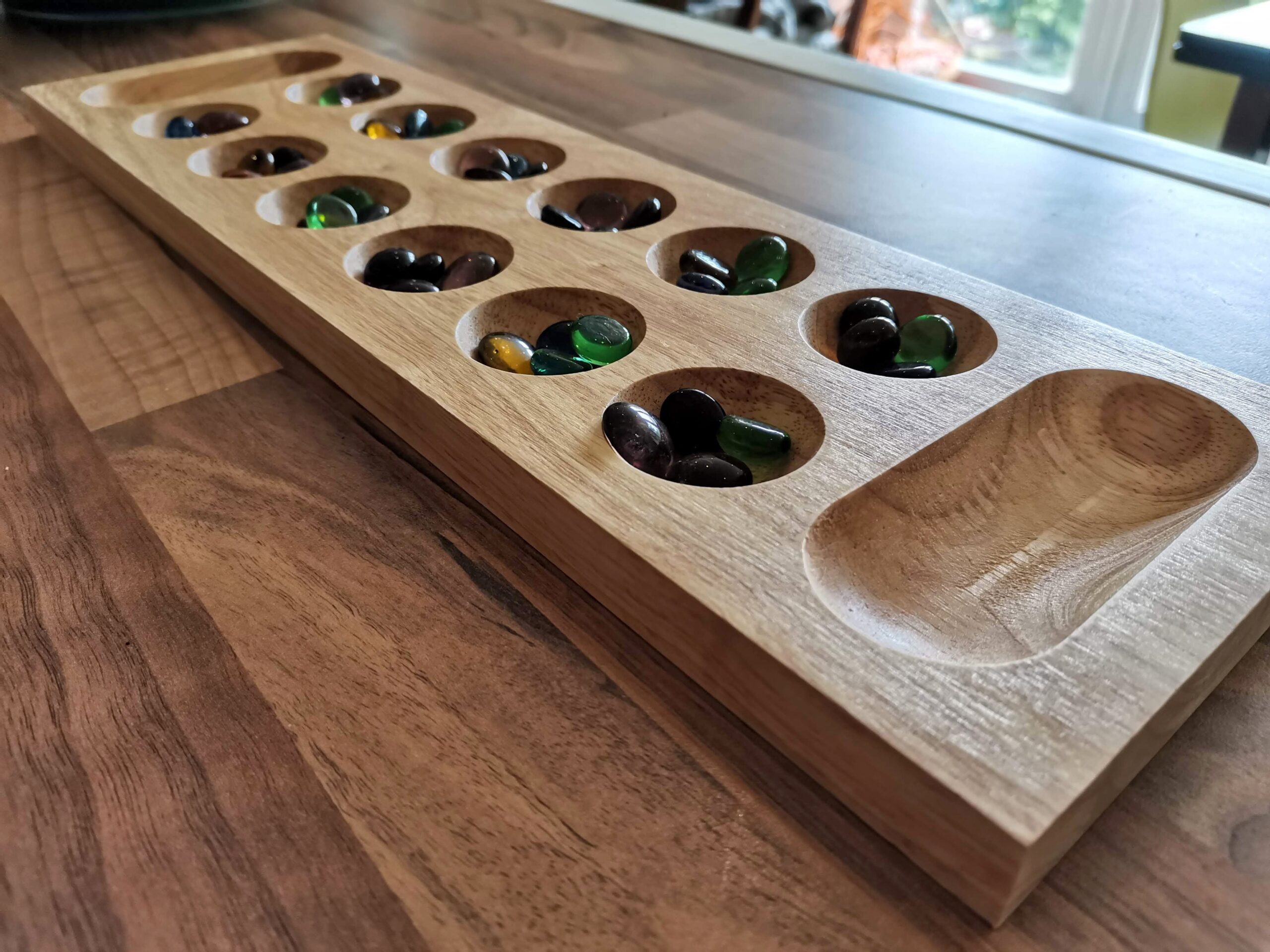Cloudspire Review

E-sports are big business. Kids not old enough to shave are winning huge tournaments and stupid money, and MOBAs are where the big money is. League of Legends and DOTA2 are the biggest and best-known, but what if – like me – your age is getting the better of you, and you just don’t have the speed and reflexes any more? What if you want that MOBA experience of powered up heroes and swarms of mobs attacking lanes, but you want to take your time? Cloudspire is the answer.
With its roots firmly in the MOBA and Tower Defence genres of video games, Cloudspire aims to replicate the feel of a game like League of Legends, but in a tabletop form. As much as I love video games, I love disconnecting from the screen after a long day at work, which is why this site exists in the first place. Chip Theory Games once again give us an Oscars goodie bag of a game, stuffing a huge box with beautiful neoprene mats, heavy poker chips, and some fantastic storage and setup pieces.
Putting a hex on you
Cloudspire is a game that’s intended to be a long-term part of your collection. A game that you’ll play dozens of times, not once or twice a year before you sell it on. The reason I bring this up so early in the review is because a) it’s expensive, and b) your first game is going to feel a little clunky. Getting used to the game’s phases, options, and the crazy number of Talents available to you (70+) is like learning to ride a bike. Awkward at first, but so smooth and easy once you’ve got it. For a game that’s rated at 4.3/5 on the BGG complexity scale, that’s high praise. Don’t be put off by the weight, thinking it means it’ll be too complicated to be fun.
The game is played on a map made of neoprene tiles. Chip Theory Games clearly have a love of neoprene, and I can understand why. Setting up the map for a game is one of the more satisfying things you can do with something this floppy. The hexes on the tiles represent landscape types, which affect different units’ movement. Movement follows an order of precedence, which means if you can move across water or mountains, you can move through forests and plains too. Using a tiered system of movement restrictions in this way removes one set of rules overhead, as you can quickly learn the precedence, and never have to refer to the rules to figure out where units can move.

The tiles themselves look a little desaturated. You can imagine that if they were made of cardboard instead, they’d be brighter, but in the same breath they’d show wear much sooner. Does that matter? Yes, absolutely. Cloudspire is a game that will have you moving heavy poker chips all over the map repeatedly, over the course of 25, 50, or 100+ plays. Despite being slightly drab, you can read everything you need from the landscape at a glance, which is what matters in a game like this.
Stacking the odds in your favour
If you’ve played Too Many Bones, you’ll be immediately familiar with the stacking mechanisms in Cloudspire. Once again, red chips are used to represent units’ health, but stacking is also used in a couple of other clever ways. When your units leave your fortress at the start of each of the four waves, you can stack hired minions together. The slowest goes on top, restricting the group’s range of movement, but those beneath it can use them as a meat shield. Once the top unit dies, the one beneath it grabs its full stack of health chips and carries on where its freshly-departed comrade fell.

The other use for stacks comes with Spires. Ah yes, spires. I haven’t talked about them yet, have I? The titular spires in Cloudspire are best compared to the towers in tower defence games. They’re built in-place and attack anything stupid enough to get too close, a bit like a lighthouse with a frickin’ laser beam. Whether they’re built on your fortress walls or out in the world, spires can be upgraded by stacking chips under them, improving their strength and range. As they take damage, spires shed upgrades from the bottom of their stacks, so even choosing which order to buy your upgrades is something you can strategise.
I’ve used quite a lot of words explaining how Cloudspire mechanically bridges the digital divide to end up on your table, so let’s have a look at the most important thing now – is it a good game?
New wave
I find that I’m a natural sceptic when it comes to a lot of things. Transitioning one type of entertainment to another (in this case video game to tabletop game) just strikes me as the sort of thing that could easily be a swing-and-a-miss. In Cloudspire’s case, it doesn’t miss. It’s a home run. Taking the battle arena formula and exposing the clockwork that drives the game’s locomotion, doesn’t ruin the experience. Instead, it allows you to play the game at a slower, more tactical pace. Four waves, which translates as four rounds of play, doesn’t sound like enough. It sounds like it’ll all be over before it gets going.
It isn’t. It’s the perfect length for the game.

There are some brilliant aspects which could easily have not made it to the final game, but did, and Cloudspire is that much richer for it. Take the Earthscape tiles for example. little groups of three hexes which you can buy and lay over the existing map, completely altering the paths, and therefore the flow of the game. The fortress uses dials for health and resources, but the spires and units use stacks of chips. Did they have to? No. But in doing so, there’s a fantastic sense of scale of the army headed your way when your opponents set-up their towering deployment stack for the coming wave.
Even with just the four factions in the base game, there’s an insane amount of replay value. The sheer number of talents available through upgrades and items, and the variety of ways to play are great. Imagine taking that empty plastic tray out of the bottom of your box of chocolates, and finding another layer underneath. That’s Cloudspire. Brute forcing your way straight across the map to knock on the door, is just as viable as exploring off the beaten track for new site to build spires. It’s a brilliant game.
Final thoughts
I love Cloudspire. I can see why it might not be appealing to some people at a first glance though. Euro gamers might not gel with the theme and idea of the game, while Ameri-style gamers might be dismayed at the lack of minis for such cool characters. Give it a chance though, and listen to the players. If you don’t believe me, go and have a look at other reviews too. Gameplay is king, after all, and the gameplay in Cloudspire is slicker than a buttered weasel.

The iconography throughout is clear and simple. You could argue that the numbers on the chips can be hard to read at a distance, but it’s not a deal-breaker. The reference sheets for each faction are great too. Chip Theory Games do a great job of structuring their games well, to break down what could be complex game systems, into digestible chunks. It is a deep, complex game, with tons of scope for strategy, but it isn’t a difficult game. That’s a very important distinction to make.
The straight-up 1v1 competitive game is so good that I’ve not even touched on the other modes of play. You can go have three or four players in a free-for-all battle, team up in pairs to fight, and on top of that there are books for solo and co-operative scenarios. Yes, Cloudspire is a huge box, and yes, Cloudspire is expensive (around £130 at the time of writing). Given how freely people throw sill money at Kickstarter campaigns, and taking into account the huge number of hours of entertainment you can get from this game, I can still highly recommend this game.
Too Many Bones might be the Chip Theory game which gets the most attention, but in my opinion Cloudspire is the better game.
Review copy kindly provided by Chip Theory Games. Thoughts and opinions are my own.
Cloudspire is available from our sponsor – Kienda. Sign-up using this link to get 5% off your first order over £60.

Cloudspire (2019)
Designers: Josh J. Carlson, Adam Carlson, Josh Wielgus
Publisher: Chip Theory Games
Art: Jared Blando, Anthony LeTourneau
Players: 1-4
Playing time: 90-180 mins











